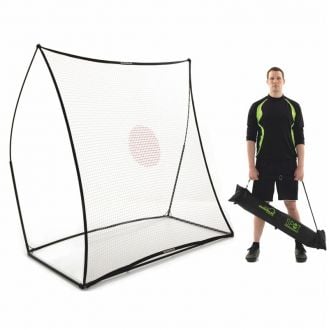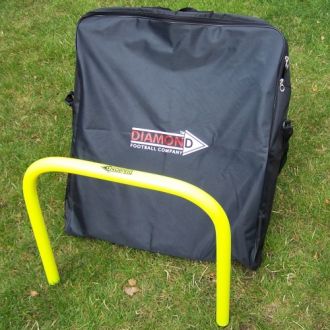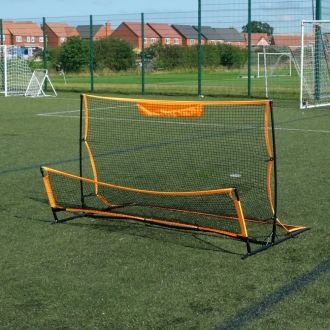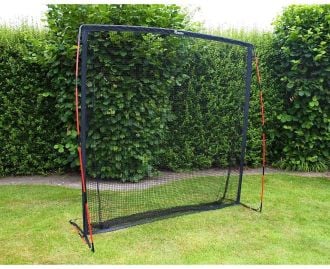Getting the Basics of Football Right: Passing, Tackling, Shooting and Heading
If you’re looking to improve your overall game as an outfield footballer, you’ll need to master the four basic skills of the game before doing anything else.
You’ll need to first master the necessary techniques, and then practise your heart out to make the most of your natural ability. By continually practising the art of passing, tackling, shooting and heading, you can continue to develop as a player - and make sure your game is always as good as it can be.
Passing
Passing is perhaps the most important of all four basic football skills. An accurate pass can split a defence in two, or get your team out of trouble. The best strikers know when to pass the ball into the net instead of simply smashing it with pure power.
The art of passing is all about technique and body shape. You’ll need to approach the ball at an angle of around 30 degrees - giving your kicking leg enough room to swing through. Meanwhile, your non-kicking foot should be firmly planted on the ground to the right of the ball. Use your arms to keep your body steady, and your head should be still - with your eyes fixed firmly on the ball.
Smoothly swing your kicking leg back, and follow through, making sure to keep your ankle firm. If you want to make a ground pass, strike the centre of the ball with the side of your foot. To make a lofted pass, strike the ball near the bottom. Striking the ball at either side and bending your body to around 30 degrees should add some spin (and therefore swerve) to your pass. But this particular skill takes a lot of practice.
Tackling
Jockeying - Jockeying is a great way of pinning down a player in possession. You can use this skill to ‘guide’ an opposition player onto their weaker side, or to allow your teammates time to take their natural defensive positions.
Jockeying involves taking up a position that is almost side on to the player in possession. Keep your knees bent, your weight slightly forward and your eyes on both the ball and the opposition player (you may get a clue as to where the player in possession is headed). Always stay goal-side and right in front of your opponent. It’s also a good idea to remain around an arm’s width from the player in possession - any closer and he or she could dribble or turn past you with relative ease.
Block Tackles - The vast majority of tackles you will make during a match will be block tackles. A successful tackle involves getting to the player with possession as quickly as possible - without committing yourself. Jockey your opponent until you see an opportunity to take the ball without committing a foul. When you see the opportunity, move your weight forward and tackle with the inside of your foot. The best time to do this is often just before the player in possession goes to pass, shoot or dribble.
Sliding tackles - When timed correctly, the sliding tackle can be one of the most effective weapons in a defender’s or defensive midfielder’s arsenal of skills. In order to execute a slide tackle legally, you need to approach the opposition player from the side, as tackling from behind is not allowed.
Use the foot that is farthest away from your opponent to either pass or hook the ball away as you make your slide. However, it’s vital that you only attempt this if you’re certain that you have the momentum to succeed. Taking the player instead of the ball could result in a red card if your actions are dangerous or prevent a clear goal-scoring opportunity.
Shooting
This may be the most glamorous part of the game, but it requires a player’s full set of skills and attributes, including technique, power, strength, balance and timing.
Your standing foot should be planted to the side of the ball - preferably a few inches behind it. Keeping your eyes on the ball, swing your kicking leg through it, using both arms for balance. Hit the ball in the centre with your metatarsals whilst remaining relatively square to the ball for a low, driven shot. If you want to place your shot with bend and precision, use the side of your foot, and bend your body away from the ball.
Heading
You don’t need to be tall to perfect the art of heading the ball. Timing and technique should be enough to make defensive clearances or attempts at goal with your head.
Get in line with the lofted ball as quickly as possible. If you’re going for goal, try to time your run so you arrive in front of the defender right at the last second. You can also create space for your header by changing direction just as the cross or lofted pass comes in. Make contact with the centre of the ball with your forehead. If you’re striking for goal, always try to strike the ball just above centre - to keep your shot down. Getting the timing right on your leap will give you the opportunity to ‘hang’ in the air.
No matter how good you think you are at these skills, you should never stop practising. A commitment to improving your game throughout your playing career will help you to be the best player you can be.






